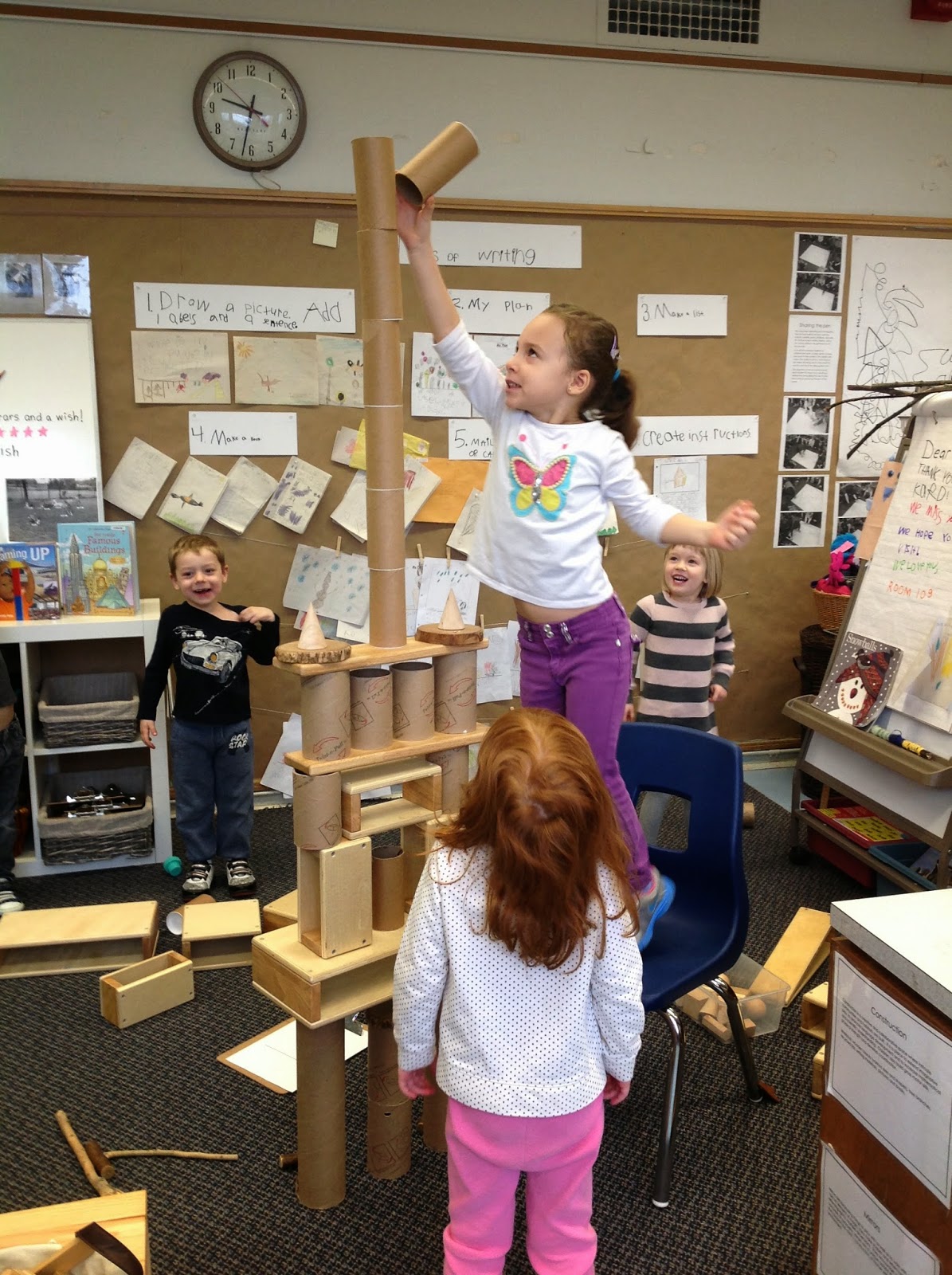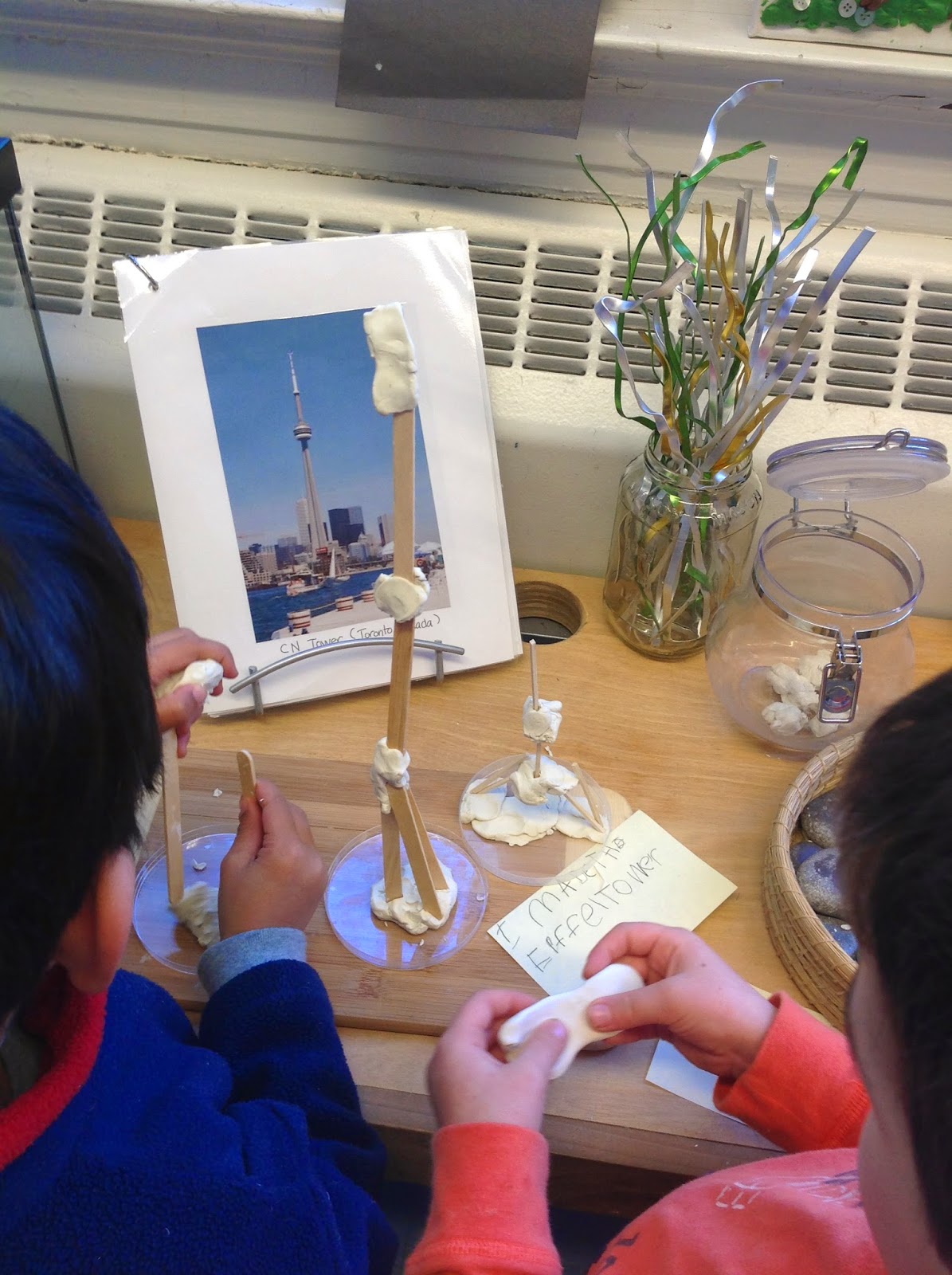I brought the pipe in the next day to show them. I passed it around and listened as students discussed what they noticed, thought, and any wonders they had.
"It might of froze and it started to get freezer and freezer and then the pipe broke because the ice was too strong because it was pushing the metal!" O. S.
"Some metal breaks and some doesn't." Z. G.
"Maybe the water was so cold and some of the cold air came through the window and it got so cold the pipe got a hole in it." C. C.
"It got so freezing outside then it got a medium crack and water started to leak out. The ice was so strong it peeled off the metal and made a leak." M. O.
"Water is so cold it is ice and made it freeze and crack." D. C.
"Maybe the heat wasn't on for the winter and it made the ice break and make a hole." B.K.
"Maybe the water squirted so hard it was so cold outside it made ice in it and caused a leak." J. K.
"I think there is ice in the pipe and water in the middle, and the water was so hard and popped out and started a leak." H. S.
"The air was so cold outside and it froze the water in the pipe and it got so hard and strong it pushed a hole in the pipe." K. W.
"The air was so cold outside and it froze the water in the pipe and it got so hard and strong it pushed a hole in the pipe." K. W.
"The breeze was so cold and the old pipe broke and the old pipe can't hold it, the breeze broke it." C. D.
"The ice got so big it broke the pipe." O. M.
"Since the pipe is round there was a lot of water there and it made the pipe burst." A. T.
I was surprised by the theories they made about the pipe and how it became broken since I never mentioned anything to them. This made me wonder if any of them experienced a mishap like this at home in some way?
As a way to further extend their learning about the capabilities of ice, I asked them if they wanted to put some water in a glass jar, set it outside and see what would happen? They were all on board to try.
One students decided to write the steps to our experiment. We also made some predictions of what we thought might happen!
"I think the glass is going to break because the ice will push. It might get too big and then the glass will break. Glass is more fragile than the pipe and so the ice is strong and breaked the pipe and will break the glass jar too." O. S.
"I think the glass will break because ice broke through metal and glass isn't as strong as metal." S. C.
"I think the water will freeze." O. M.
"Maybe the glass will break because the ice is strong." K. W.
The next day we retrieved our experiment from outside and observed what happened!
"The ice was pushing and hitting the jar and it bonged a piece off the jar!" J. K.
"The water turned into ice and made a piece break off the jar because ice is stronger than glass." M. O.
"But metal is stronger than glass. What happens to ice when it freezes? Is it bigger or smaller?" O. S.
"It gets bigger because the ice is stronger than metal and the ice made a hole in the pipe." A. F.
"I think it gets smaller when it freezes. It gets smaller when it melts." P. I.
"I think it gets bigger because ice gets stronger and it depends how long you froze it. It gets bigger because it grows, it broke a piece off the glass." H. S.
Listening to the students, I noticed that they started to discuss the physical change of ice and used their observations to create theories based on the notion that ice either gets bigger or smaller when it freezes.
Once students who want to participate fill a sticky, we will come together and discuss everyone's thoughts and figure out what path it may lead us on!
As a way to further extend their learning about the capabilities of ice, I asked them if they wanted to put some water in a glass jar, set it outside and see what would happen? They were all on board to try.
One students decided to write the steps to our experiment. We also made some predictions of what we thought might happen!
"I think the glass is going to break because the ice will push. It might get too big and then the glass will break. Glass is more fragile than the pipe and so the ice is strong and breaked the pipe and will break the glass jar too." O. S.
"I think the glass will break because ice broke through metal and glass isn't as strong as metal." S. C.
"I think the water will freeze." O. M.
"Maybe the glass will break because the ice is strong." K. W.
The next day we retrieved our experiment from outside and observed what happened!
"The ice was pushing and hitting the jar and it bonged a piece off the jar!" J. K.
"The water turned into ice and made a piece break off the jar because ice is stronger than glass." M. O.
"But metal is stronger than glass. What happens to ice when it freezes? Is it bigger or smaller?" O. S.
"It gets bigger because the ice is stronger than metal and the ice made a hole in the pipe." A. F.
"I think it gets smaller when it freezes. It gets smaller when it melts." P. I.
"I think it gets bigger because ice gets stronger and it depends how long you froze it. It gets bigger because it grows, it broke a piece off the glass." H. S.
Listening to the students, I noticed that they started to discuss the physical change of ice and used their observations to create theories based on the notion that ice either gets bigger or smaller when it freezes.
Once students who want to participate fill a sticky, we will come together and discuss everyone's thoughts and figure out what path it may lead us on!









.jpeg)













































